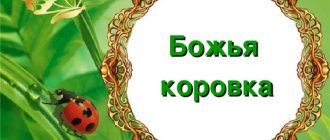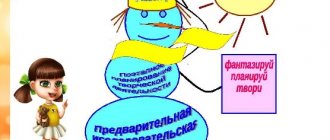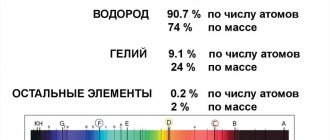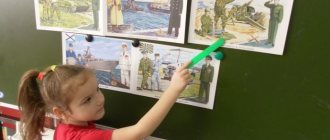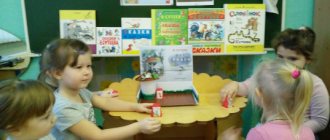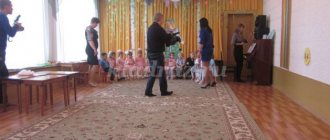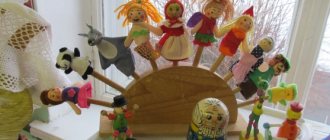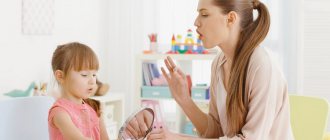Project: “Spring is red.” Middle group
Project: “Spring is red.” Middle group
Project duration:
March, April
Project type:
cognitive and research.
Project participants:
children, parents, teachers.
Relevance of the project:
Fostering a careful and caring attitude towards living and inanimate nature is possible when children have at least basic knowledge about them, master simple methods of growing plants, caring for animals, learn to observe nature and see its beauty.
Introducing preschoolers to nature is a means of developing in their minds realistic knowledge about the world around them, based on sensory experience.
The ability to see and listen to nature as it really is, acquired in childhood, arouses deep interest in it in preschoolers, expands knowledge, and contributes to the formation of character and interests.
Continue to develop coherent speech, the ability to express your thoughts clearly for others, and develop interest and love for nature.
A problem that is significant for children, which the project aims to solve:
Formation of elementary ideas about spring. Children have not developed knowledge about spring changes in living and non-living nature. Children do not know how to compare different periods of spring; they have not developed a caring attitude towards the awakening nature. Children have no idea about the first flowers of spring. Children have a little knowledge about migratory birds and their life in the spring. Children do not know how to establish the simplest connections between the conditions of the coming season and the behavior of animals, birds, and the state of vegetation.
Objective of the project:
Summarizing observations of seasonal changes in nature and animal life in the spring.
Objectives: expand children’s understanding of the seasons and spring,
highlight its signs;
develop and activate children's vocabulary about spring;
cultivate interest in the surrounding world and natural phenomena;
Project objectives:
Educational:
Clarify and systematize children’s ideas about spring changes in nature. Activate children's vocabulary with concepts from the lesson topic.
Educational:
Develop a desire to communicate with peers during activities.
Expand children's knowledge about the signs of spring, teach them to establish the simplest connections between the conditions of the coming spring.
To develop cognitive activity, thinking, imagination, communication skills, productive activity, creativity, fostering creative initiative, respect for the environment.
Educational:
To cultivate a caring attitude towards the awakening of nature, towards its individual phenomena. Cultivate a respectful attitude towards the answers of peers. To promote children's interest in nature.
Vocabulary work
: spring - red, drops, buds are swelling, sunny, streams, making nests, thawed patches, waking up from hibernation, weather, puddle, leaves, spring, first, green, warm, long-awaited.
Final event of the project:
Poetry competition about spring
Project products:
For teachers:
-Inform project participants of the importance of this topic.
— Create a development environment; select materials, toys, attributes for gaming and theatrical activities; didactic games, illustrated material, fiction.
— Select material for productive activities.
For parents:
— consultation “Environmental education of children in the family”,
— consultation “Spring ice is a source of increased danger”!
Expected results for the project:
Children:
- The most characteristic seasonal changes in nature are identified;
- They know migratory birds;
- Look at the pictures and make up stories based on them; Use all parts of speech, simple uncommon sentences;
- Show respect for nature.
- Participate in discussions.
- Participate in seasonal observations.
Teachers:
- They will increase professional competence in the design of the pedagogical process based on the integration of educational areas within the framework of the implementation of the Federal State Educational Standard on the topic of the project.
- They will master the methods and techniques of creating a model of complex thematic planning based on an integrative approach to the project topic.
- They will provide conditions for improving the methodological base on this topic.
Parents:
- Show interest in joint activities with the child.
- They will become active participants in the implementation of the project.
- Motivation for cooperation will increase.
Stage I preparatory
1.Development and accumulation of teaching materials.
2.Creation of necessary conditions for the implementation of the project.
3.Creation of a developmental environment.
4. Selection of the necessary fiction on the topic of the project.
5.Development of events.
6.Consultations for parents: “Environmental education of children in the family”,
“Spring ice is a source of increased danger”
II main stage
- Introduction into the educational process of methods and techniques to enrich the knowledge of preschool children about seasonal changes in nature;
- Design of a collection of poems about spring: “Spring sends greetings with a smile”
OD on drawing “Willow Twig”, “Spring Flowers - Primroses”, “Swallows Have Arrived”. (D.N Koldina, T.S Komarova)
- OD on the application “Butterfly”, My beloved Sun”, “Willow Branch” (D.N. Koldina)
- OD on modeling “Colored umbrellas”, “Snail”, “Starry sky” (D.N. Koldina)
- Conversations:
“Spring”, “Safe behavior in nature in spring”. “Animals and birds in spring”, “Solar drops”.
- Creating a mini garden on the window
- Fiction.
Reading:
“Spring has come” by L.N. Tolstoy, “Zayushkina’s Hut” b. n. With.
N. Sladkov “Bear and the Sun”, “Spring Streams”, “Flower Lover”, “Flight of Flowers”, “Twelve Months” (Slavic fairy tale), - Story “Snowdrops” by S. Vangeli.
Poem about spring “Facing Spring” by R. Sef. “Song of Spring Minutes” by V. Berestov, “Twelve Months” by S. Marshak, Poem about trees in spring “Birch” by P. Voronko. “Osinka” by I. Tokmakov. “Bird cherry” S. Yesenin. “Cheryomukha” by E. Blaginin, Poem “Spring - Spring” by E. Baratynsky, Poem “Salute to Spring” by Z. Alexandrova.
- Outdoor games.
- “Migration of birds”, “Beetles”, “Sun and rain”, “Hares and wolf”, “Let’s jump over the stream”, “The bunny sits, sits”, “Warm the sun warmer”
- Didactic games.
“Birds”, “What has changed on the street?”, “What’s the beginning, what’s next?”, “When does this happen?”, “Miracle flower.”
- Observation:
“Birch twig”, “Streams”, “Planting different types of seeds”, “The sun is shining brighter”, “Blue sky”, “Fluffy clouds”, “Insects”
- Finger games:
“Trees”, “Roots”, “Early Spring”, “Primroses”, “Return of the Birds”.
- Working with parents:
exhibition of drawings, consultations, planting seeds.
- Musical works.
-P. Tchaikovsky “Seasons. Spring"
— E. Grieg “Butterfly”
— M. Glinka “Lark” N. Mitlova “Winter has passed” song.
— Ukrainian folk song “Vesnyanka”
— A.A. Belous “Spring Song” round dance.
- audio recording of birds singing.
- Traffic rules
“Traffic light”, “Safe behavior in a car”, “Road signs”
- Role-playing games:
- Watching cartoons
on a spring theme. Discussion
Working with parents:
- Carrying out cleanup days at the site
- Reading competition on the theme “My Beloved Mommy”
- A selection of subject paintings on the theme “Spring is Red.”
- Decoration of a group on a spring theme (decoration, decoration).
- Making bird feeders.
- Design of an exhibition of drawings on the theme “Insects”.
- 7. Photo exhibition “Spring Adventures”.
Stage III - final
- exhibition of drawings and photographs on the topic of the project;
Result:
During the work on the project, the children were interested in the theme of the project, they gladly took part in all events and educational activities. Children learned to identify characteristic seasonal changes in nature and list all migratory birds. Throughout the project, the children looked at the pictures with great curiosity and observed the trees and birds. We actively took part in creating a mini-garden on the window and happily participated in the collective final work of the project. During their working life, children often shared their impressions not only with the teacher, but also with their parents. And also among themselves.
The content of the project and photo reports reflect the results of observations and the work done by the children.
Thus, the work done during the project gave a positive result not only in the cognitive, speech, but also in the social development of children, and also contributed to the interest and desire of parents to take part in the “Spring” project.
Project in kindergarten for middle group children. Spring came
Project for children 4-5 years old “Spring has come”
Author: Andronova Marina Aleksandrovna, teacher at MKDOU Gavrilovo Posad kindergarten No. 1 Description: I offer you a project in the middle group of the kindergarten.
The material will be useful for kindergarten teachers. Project for children 4-5 years old “Spring has come”
Project type: educational and research, group. Duration - short-term, 1 week Project participants: - children of the middle group; - parents of students; - group teacher. Relevance of the topic: At this age, children do not have enough knowledge about seasonal changes in nature. They do not feel responsible for the nature that surrounds them. The knowledge gained during the project will teach them to protect and love nature from an early age. The goal of the project is to expand and enrich knowledge about spring changes in living and non-living nature, to cultivate a joyful, caring attitude towards awakening nature. Objectives of the project activity: 1. Establish the simplest connections between the conditions of the upcoming spring season and the behavior of birds and the state of vegetation; 2. Develop the desire to communicate with peers during gaming activities; 3. Develop the ability to answer questions and conduct dialogue; 4. Develop thinking, imagination, communication skills; Participation of parents in the implementation of the project: Design of a folder for parents on the theme: “Spring”. Project implementation plan: Stage 1 Preparatory:
choosing a topic, defining goals and objectives, drawing up a plan for the main stage, selecting the necessary materials on the topic.
Stage 2 Main:
Generalizing children's knowledge about the signs of spring (talking about spring as a season, reading and memorizing poems about spring, observing natural phenomena, examining poplar branches, “bud, house for a leaf”).
-Educational interest in research activities (why water changes color - the water is clear, but if you add paint or clay, the water will change color.) -Vegetable garden on the window - joint activity of planting onions in the ground, interest in experimental and research activities in growing plants in room conditions. -Design from paper “Boat”. -Game and research activity “Swim, sail, my boat.” Stage 3 Final:
sketching spring impressions, designing an exhibition of drawings “Spring is coming to us...”.
Didactic games: “When does this happen? ", "What first, what then" Expected result: Draw children's attention to seasonal changes in the natural world in spring. Presentation of the project: design of the exhibition of drawings “Spring is coming to us...”. Applications to the project “Spring has come”: During the week, work was carried out with the children on the project: Conversation about spring, as the coming season: “What happened to nature?”
What is this noise, what is this commotion? The birds have returned to us. Conversation with children about migratory birds.
Guess, guys, what time of year it is? Didactic game “When it happens”
Observations in nature. Our beautiful linden tree is still sleeping. But soon the sun will warm up and she will wake up.
We draw spring - red. NOD “Spring is coming to us”
Directly Educational activity: Here are the boats we got. Paper construction “Boats”
Our ships will sail to distant countries.
Experimental research activities. The water is clear. Let's try adding paint and the water will become multi-colored.
In spring, everyone needs vitamins, and we will grow them ourselves. Planting onions.
Exhibition of drawings “Spring is coming to us...”. Look how beautiful it turned out!
Project outcome: At the end of the project, the children learned a lot about the life of nature. They learned to protect and love nature, notice changes in the life of plants and birds, and learned some of the properties of water. We learned how to fold a sheet of paper to make a boat. And most importantly, we received a lot of positive emotions. The project is finished, but we will be able to observe nature outside the window throughout the year. I hope that this knowledge will help my students become true connoisseurs of nature.
We recommend watching:
Family - creative project for kindergarten Short-term project in the middle group. Rules of conduct Project for kindergarten. Middle - senior group Short-term project in the 2nd junior group. Wintering birds
Similar articles:
Entertainment dramatization on the theme: Spring in kindergarten. Middle - senior group. Scenario
Spring games for middle group children in kindergarten
Drama about spring for preschoolers
Summary of a spring walk in the middle group
Morning exercises in the middle group. March
